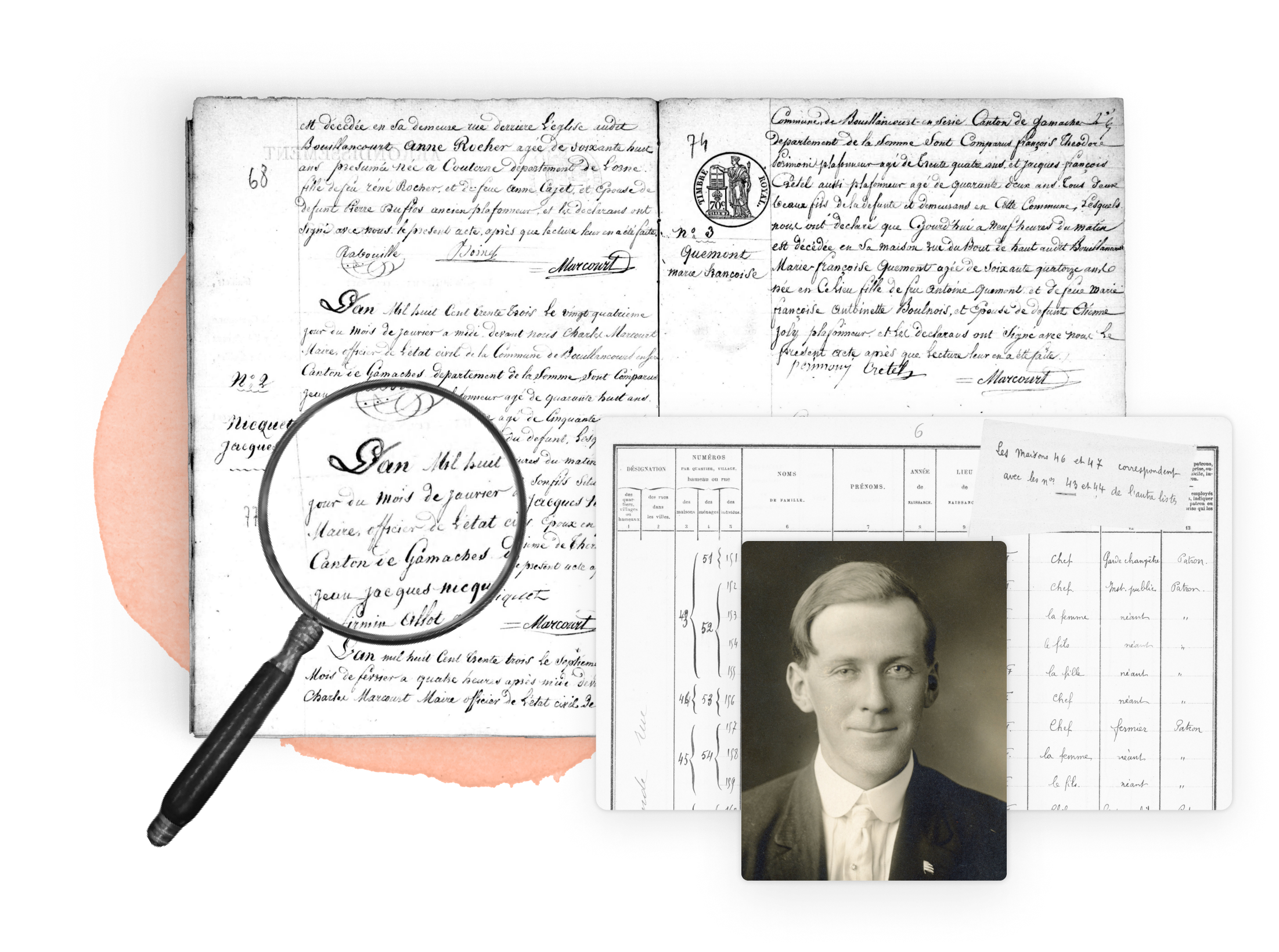Immigration records in Israel contain information such as the name of the immigrant, their country of origin, birth year, date of arrival, final destination in Israel, and the name of the vessel they arrived on if they arrived by boat, all pertaining to Jewish individuals who arrived in what is today the territory of Israel with the purpose of residing there. Since 1919, these records have been kept by the Jewish Agency, and they were made available to the general public on January 2023 thanks to a collaboration between MyHeritage and the Jewish Agency for Israel.
Research your ancestors on MyHeritage
Israel, Immigration Lists: the collection on MyHeritage
This collection of immigration records in Israel was created by scanning books from the Israel State Archives containing lists of immigrants arranged in chronological order according to the arrival dates of the ships or planes to Palestine or the State of Israel, which were used previously by the Jewish Agency’s Relatives Search section. These records also include the arrival of tourists to Israel, or the return of Israeli residents from a trip abroad. While most of the records contain arrivals by boat or airplane, those who came in through border crossings in the north or south also appear in the collection. The information in this collection was recorded at all seaports, airports, and border crossings in a standardized format up until 1975. Although most of the data in this collection has been entered in Hebrew, MyHeritage’s Global Name Translation Technology™ makes it possible to search the collection in English and other languages, with the names in the records found transliterated to the language of the researcher.

Historical background
The Mandate for Palestine was established under British administration as a League of Nations mandate covering the territories of Palestine and Transjordan, both of which had been conceded by the Ottoman Empire following the end of World War I in 1918. The British administered the territory of what today is Israel from 1919 until the country declared its independence in 1948. During that period, there were four waves of immigration, or aliyot in Hebrew. There were many reasons why people made aliyah: some were leaving their countries of origin following their political or religious ideals, and some were fleeing antisemitism. In practice, most were looking to start a new life following the World Wars. Historians have defined four waves of aliya between 1882 and the beginning of World War II. This collection starts with the Third Aliyah period, as the first two waves took place from 1882 to 1918 under Ottoman rule.
The Third Aliyah occurred between 1919 and 1923, and was made up of mainly Eastern European Jewish immigrants called halutzim ("pioneers") who left Europe after WW1 to create a new future for themselves. The Fourth Aliyah, which took place between 1924 and 1929, was composed of mostly Jews who were fleeing the growing antisemitism in Europe and the Middle East. While most of these immigrants arrived from Eastern European countries like the Soviet Union, Poland, Lithuania and Romania, Jews from Yemen and Iraq also arrived during this wave. The Fifth Aliyah, which took place from 1929 until 1939, was the largest one, with around 225,000 to 300,000 immigrants arriving.[1] Most of the immigrants were fleeing antisemitism in Poland, Czechoslovakia, Austria, and Greece as well as the rise of Nazism in Germany, with some immigrants also arriving from Iran, Yemen, and Turkey. The high number of immigrants was possible also thanks to the support of the new British colonial administrator, Arthur Wauchope, who was more sympathetic to Jewish immigration.[2] However, in the last years of the British Mandate, the authorities enforced immigration quotas; many Jews found ways to enter illegally anyway. The collection hosted on MyHeritage does not include lists of illegal immigrants, but there are several lists of children who arrived as part of the youth immigration during this time period.
Examples of immigration records in Israel
Bracha Fuld
Bracha Fuld was a Jewish resistance fighter who died at the age of 18 while trying to help Holocaust survivors enter Palestine. She was the very first female Jewish soldier killed during the pre-state conflict with the British and a street is named after her in Tel Aviv. By using MyHeritage’s Global Name Translation Technology™, a search for her original name, Barbara Fuld in English, brings up the correct record in Hebrew along with a transliteration of her Hebrew name ברכה into English.

This record includes the date and place of her arrival, as well as her age: 13 years on March 21, 1939 in Haifa. It also includes the name of the ship, SS Champollion. She arrived on her own, despite being a minor. There is an option to view the entire page of the record book.

Shlomo Amar
The former Sephardic Chief Rabbi of Israel and current Chief Rabbi of Jerusalem, Shlomo Moshe Amar, was born in Morocco in 1948 and immigrated with his family at the age of 14. While his Hebrew name is שלמה משה, he was registered under the French authorities in Morocco as Solomon, which explains why the record appears as a suggestion when searching for שלמה משה עמאר. Also, since he was a minor at the time of his aliya, he appears in a record under his father's name because he immigrated with his family, unlike Bracha Fuld.

After expanding the record, the destination of the Amar family, the then-transit camp of Ofakim, appears.



